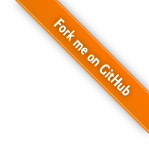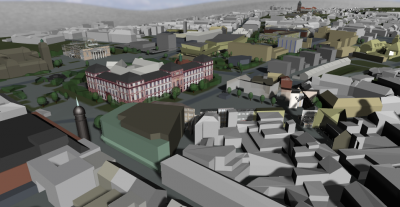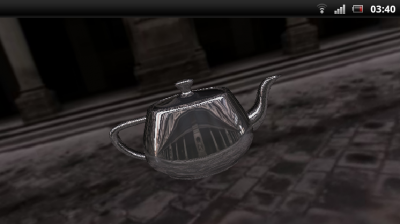
05.02.2014 Showcase
We added the Siena Cathedral to the showcases. The demo comes with a nice animated camera flight through the wonderful building. In the near future, we hope to add more showcases and demos to the dedicated demo page, which is currently http://examples.x3dom.org/.
The Siena Cathedral can be found here.
08.10.2013 Showcase
Another Fraunhofer project uses X3DOM to render a 3D web visualization: CityServer3D. The technology of the CityServer3D consists of a geo-database, a server with numerous interfaces for the import and export of the data and applications for the development of landscape models. This data can also be presented in a web browser using X3DOM to render the visualization. For instance, the city of Darmstadt:
This representation has been rendered using the CityServer3D VIEW Service which provides complete 3D GIS applications based on integrated 2D and 3D data. Moreover, it offers direct access to geodata via a powerful web service interface.
12.09.2013 Showcase Technical
Back in June we’ve presented a prototype of a new RESTful interface to exchange graphics based data values across networks at Web3D 2013. This interface can be used to query data from a running application, modify or use it to display something. Said prototype is implemented inside InstantIO, the hardware component of Instant Reality which supports more than 40 devices. For the first time now, you’re able to query hardware information from InstantIO through Javascript from a browser. We’ve set up a tutorial on how to connect a Oculus Rift HMD to an X3DOM application: X3DOM renders a scene as distorted stereo image but connects via REST API to a local InstantIO server, opens a WebSocket connection on the orientation field of the Oculus and uses the incoming data to rotate the view!
You can do this of course with arbitrary hardware (think of the LEAP support or the Kinect), but please bear in mind that this is only a preview at the moment.
You can find the tutorial here. Enjoy!
07.07.2013 Showcase
VRMath 2.0 (VRMath2) is a Virtual Reality learning environment (VRLE) and an online learning community. It employs the powerful ideas of 3D Logo Microworld and Web 2.0 technologies for learning mathematics and was created by Andy Yeh, Australia.
In VRMath2, everyone can Design, Create and Share their 3D virtual worlds. There are also design challenges you can take up and blog later right here in VRMath2 website.
26.04.2013 Showcase
The scalable SimScale platform uses X3DOM as viewer frontend for visualizing the results of online numerical simulations on CAD data.
22.04.2013 Showcase Uncategorized
Yet another interesting industrial show case from Frank Lamack, T-Systems, Germany. Goal of this solution is to build a web 3d based environment for distributed teams to enable collaborative design reviews or co-browsing with customers for sales, configuration and consulting sessions – on one common 3d product model: Without any plug-in or additional software licences – simply via web. Upcoming features: dimensioning, annotation on parts or co-design-editor, to transform 3d-shapes.
T-Systems Multimedia Solutions (MMS) develops web-based solutions for large corporations and medium-sized enterprises. Around 1.000 employees serve customers from every sector, developing web innovations for services used in domestic and commercial digital contexts. This includes e-commerce, information management and knowledge management. The actual developing team develops visual configuration solutions, that use 3D construction data and product meta data in combination with rule-based configurations for immersive e-sales and e-commerce applications for web or mobile devices.
22.02.2013 Showcase
This external showcase developed by the Virtual Reality Center Production Engineering (VRCP) in cooperation with the Fraunhofer Institute for Machine Tools and Forming Technology (IWU) shows an innovative way to present complex content with the use of 3D models. 3DWebpresenter makes it obvious that X3DOM can also visualize complex 3D scenes combined with interactive Web elements. While navigating intuitively through a virtual factory, further information of the results of 30 projects of the Innovation Alliance “Green Carbody Technologies” can be accessed.
01.02.2013 Showcase Technical
When using declarative 3D approaches for the rendering of large models, it is crucial to externalize vertex data from the HTML document by using binary containers (see previous post). Attribute data can be concurrently fetched by the Browser via Ajax calls or image downloads and is directly transferred as-is to GPU memory for rendering. Such a straightforward approach significantly reduces the memory and processing overhead, which is especially of high importance on mobile devices with limited CPU power.
A new X3DOM example, which uses the BinaryGeometry node, demonstrates how a compact vertex data representation for efficient visualization of large models can look like.
We furthermore improved our culling and mesh compression techniques to get the famous Boeing 777 model running at interactive frame rates. This “out-of-browser”-based hybrid client/server approach allows rendering 350 million triangles, where a special out-of-core server constantly streams up to 9 million triangles to the client. The results are not yet final, but the current state shows that the method scales and we can handle models even of the size of the 777. And here is the link to the video: http://www.youtube.com/watch?v=4TrJBsb74f0
26.11.2012 Showcase Uncategorized
The X3DOM showcases reported here have largely been centered around industrial or scientific applications. However there’s a lot of potential for commercial applications that has not been explored yet. As the framework matures, it is much more interesting and usable for larger deployments.
One example of such an application is Mixee Me. A recent startup which sets out to bring 3D printing to the average joe. The gist: Mixee Mee allows everyone to create funny little 3D characters through a simple interface, have them printed with a 3D printer and shipped to your doorstep. In order to allow for online composition of the 3D figures, X3DOM is used to drive the interface.
22.10.2012 Showcase
This external application created by the german company 3D Betrieb, shows how X3DOM can be used to create a real-time product configurator. The application features a PDF export as well as still image dislpay of the configured product.
07.07.2012 Showcase Uncategorized
We are going to present the paper with the longest title we’ve ever produced at the Web3D 2012 conference taking place in four weeks in LA: “Using Images and Explicit Binary Container for Efficient and Incremental Delivery of Declarative 3D Scenes on the Web“. It’s all technology to build fast and responsive X3DOM applications. We are going to release the final code as part of X3DOM and a command line tool to convert the mesh data easily before the event. In the meantime please enjoy some more demos that utilize the new binary mesh container.
18.05.2012 Showcase
Applications to experience cultural heritage objects seem to be really popular inside of the x3dom community :). There is another 3D gallery for scanned historical objects.
This external show-case is from Anestis Koutsoudis, Cultural and Educational Technology Institute – Research Centre ‘Athena’, and includes a nice 2D-UI to browse the different models.
15.05.2012 Showcase
Another excellent external showcase that provides an x3dom integration is OpenCart, which is a powerful and easy to use open source shopping card system.
The latest version of the code now supports X3D as media type and uses x3dom for online visualization.
14.05.2012 Showcase
This external showcase by Sandy Ressler of NIST demonstrates the integration of X3DOM in HTML-based slide shows.
12.03.2012 Showcase
The EU funded Project 3D-COFORM (http://www.3d-coform.eu/) provides different tools and expertise for 3D collection formation. The project utilizes the binary compression method of X3DOM to visualize large 3D scanned data sets (up to 4 million polygons) in real time.
“These models have been digitized and provided by the Victoria & Albert Museum in London (http://www.vam.ac.uk/)
27.02.2012 Showcase
This external showcase demonstrates the use of X3DOM in product customization. The company 3D Betrieb created this online 3D product configuration tool helping the user to visualize objects with different designs. It allows to preview the object with different appearances showing changes in colors, arrangement as well as viewing angle.
16.01.2012 Showcase
The WebGL Liver Anatomy Browser is developed within a german research project supported by the BMBF. The browser is part of a eLearning application and provides interactive web-based 3D models derived from patient-specific image data. 3D visualizations are accessible in real-time with a newly developed viewer based on X3D, X3DOM and WebGL.
09.01.2012 Showcase
The Portuguese research project called ColaDI, a national funded project led by inEvo, focused on developing a collaborative document management solution (DMS) for industrial design. The project uses X3DOM to show and annotate 3D models.
Showcase
This external showcase by Tampere University of Technology, demonstrates displaying CAD-imported models in browser and changing the model on-the-fly from a simulation.
X3DOM is used to render a X3D model exported from a native CAD application. The model is update REAL-TIME from a Matlab simulation model. It also integrates the 3D view with our other tools like semantic search by capturing DOM events (video around 2:53). Interfacing with the simulation from the browser is done via WebSockets. It displays the performance X3DOM is capable of: latency for visualization is constantly less than 50-100 ms.
22.12.2011 Showcase Technical
In the latest software upgrade for the 2011 Xperia Phones, Sony Ericsson included WebGL support. By doing so, Sony Ericsson is the first mobile phone manufacturer to support WebGL for the default (Android) web browser and standard HTML content.
Klas Hermodsson (and earlier Anders Isberg) from Sony Ericsson contacted us a few weeks ago and told us that they tried to run our examples and that unfortunately most of them didn’t work properly. To support our work Sony offered to send us a test device. We got this device (Sony Ericsson Xperia Pro) last Monday and it is really an incredible piece of hardware.
So Timo started immediately to rework our shader compositor to produce more compact shaders, which work better on mobile devices and now (almost) everything works fine. There are still some minor issues, but this should be fixed soon.
A lot of thanks again to Sony Ericsson for this great test device.
